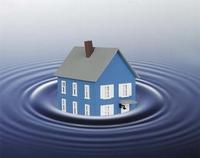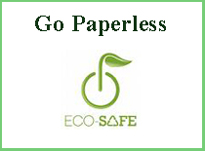Review with your insurance agent all necessary insurance policies, including flood insurance. After this review and securing flood insurance, there are several things you can do to minimize losses in your home and ensure your family’s safety.
1. Safeguard your possessions.
Create a personal “flood file” containing information about all your possessions and keep it in a secure place, such as a safe deposit box or waterproof container. This file should have:
- A copy of your insurance policies with your agent’s contact information.
- A room-by-room inventory of your possessions, including receipts, photos, and videos.
- Copies of all other critical documents, including finance records or receipts of major purchases.
2. Prepare your house.
- Clear debris from gutters and downspouts.
- Anchor any fuel tanks.
- Raise your electrical components (switches, sockets, circuit breakers, and wiring) at least 12 inches above your home’s projected flood elevation.
- Place the water heater, washer, and dryer on cement blocks at least 12 inches above the projected flood elevation.
- Move furniture, valuables, and important documents to a safe place.
3. Develop a family emergency plan.
- Create a safety kit with drinking water, canned food, first aid, blankets, a radio, and a flashlight.
- Post emergency telephone numbers by the phone and teach your children how to dial 911.
- Plan and practice a floodevacuation route with your family. Know safe routes from home, work, and school that are on higher ground.
- Ask an out-of-state relative or friend to be your emergency family contact.
- Have a plan to protect your pets.
For more information on emergency preparation for your family, talk to your insurance agent and visit Ready.gov.





Comments on this entry are closed.